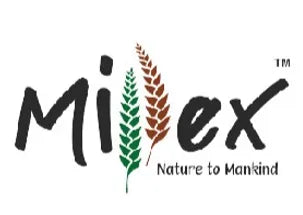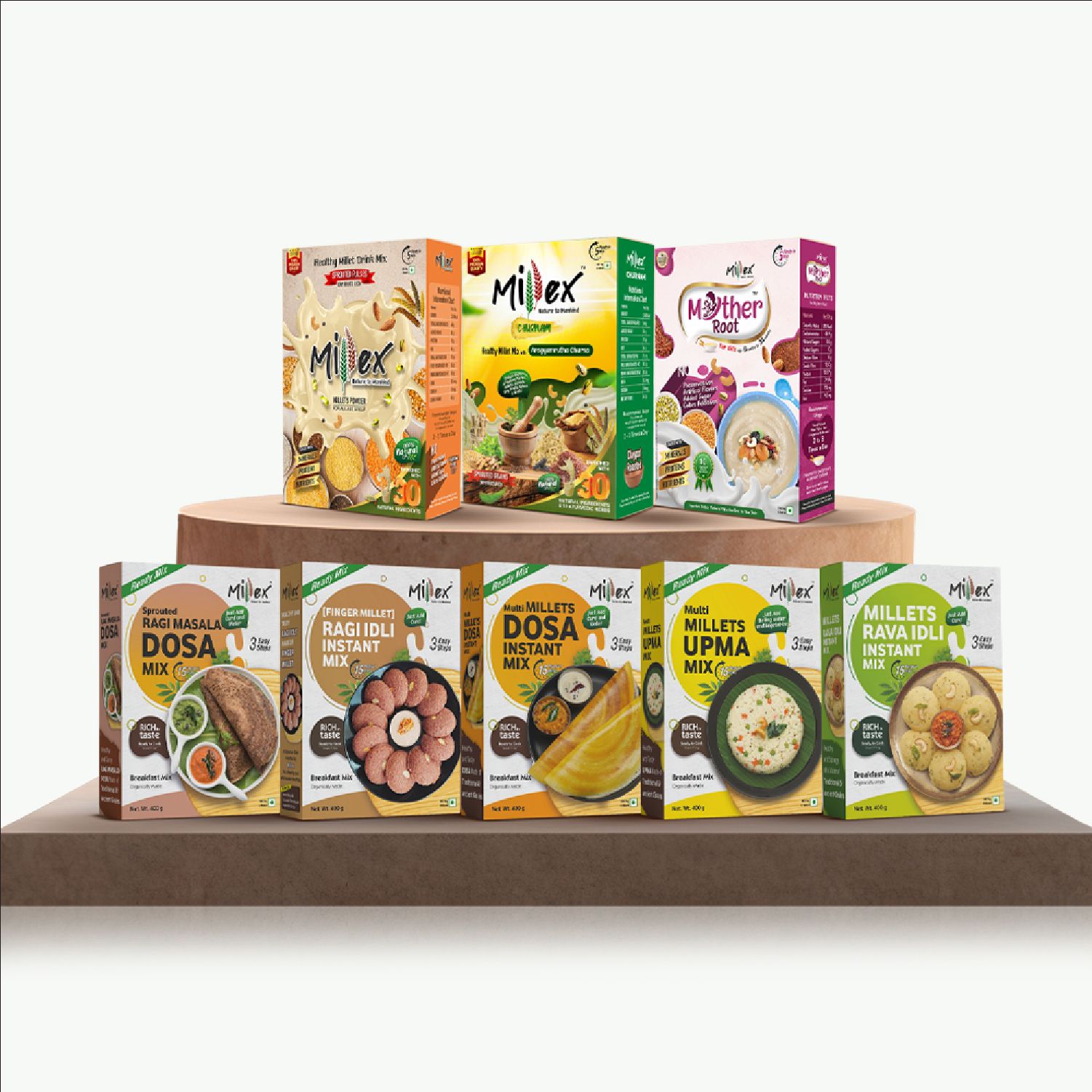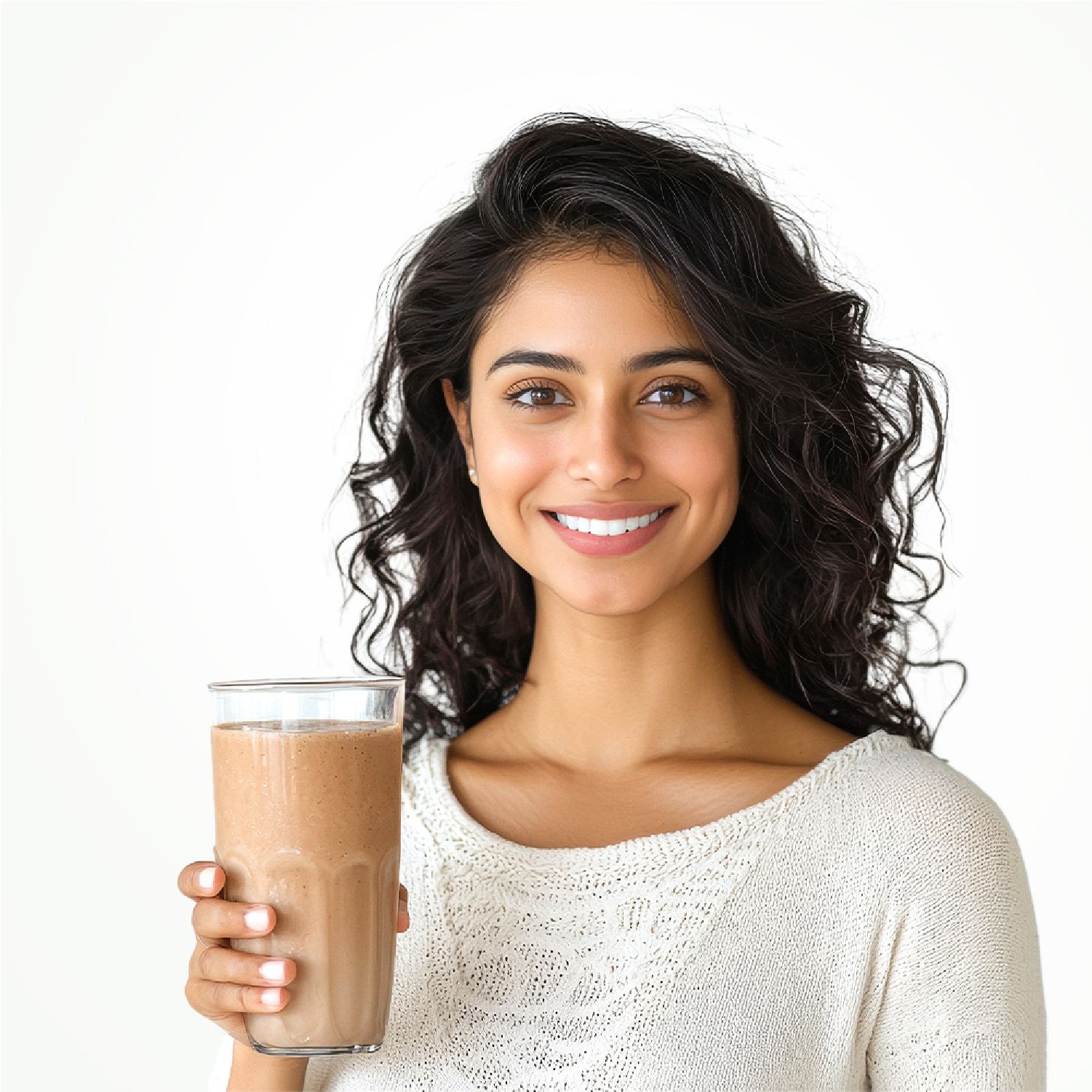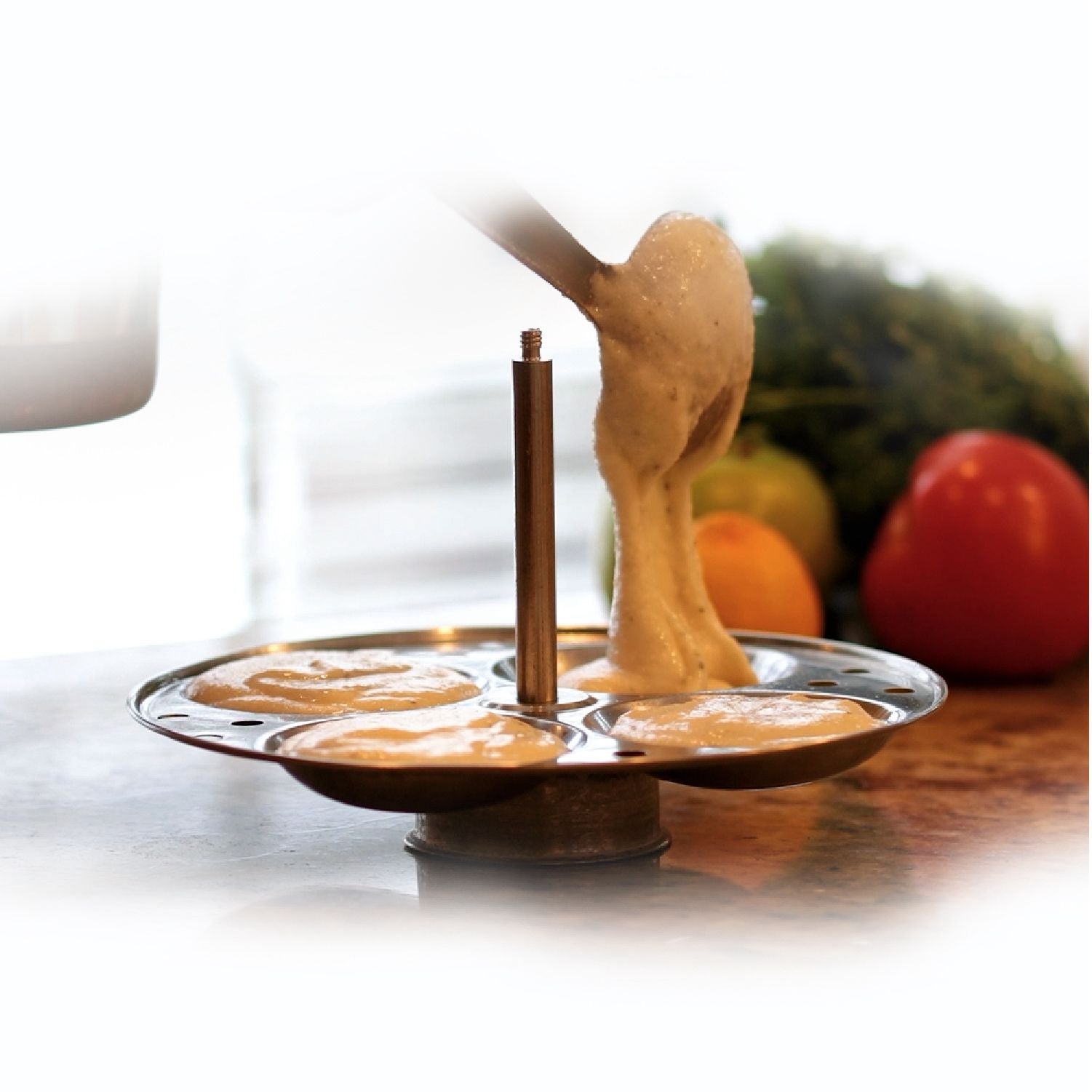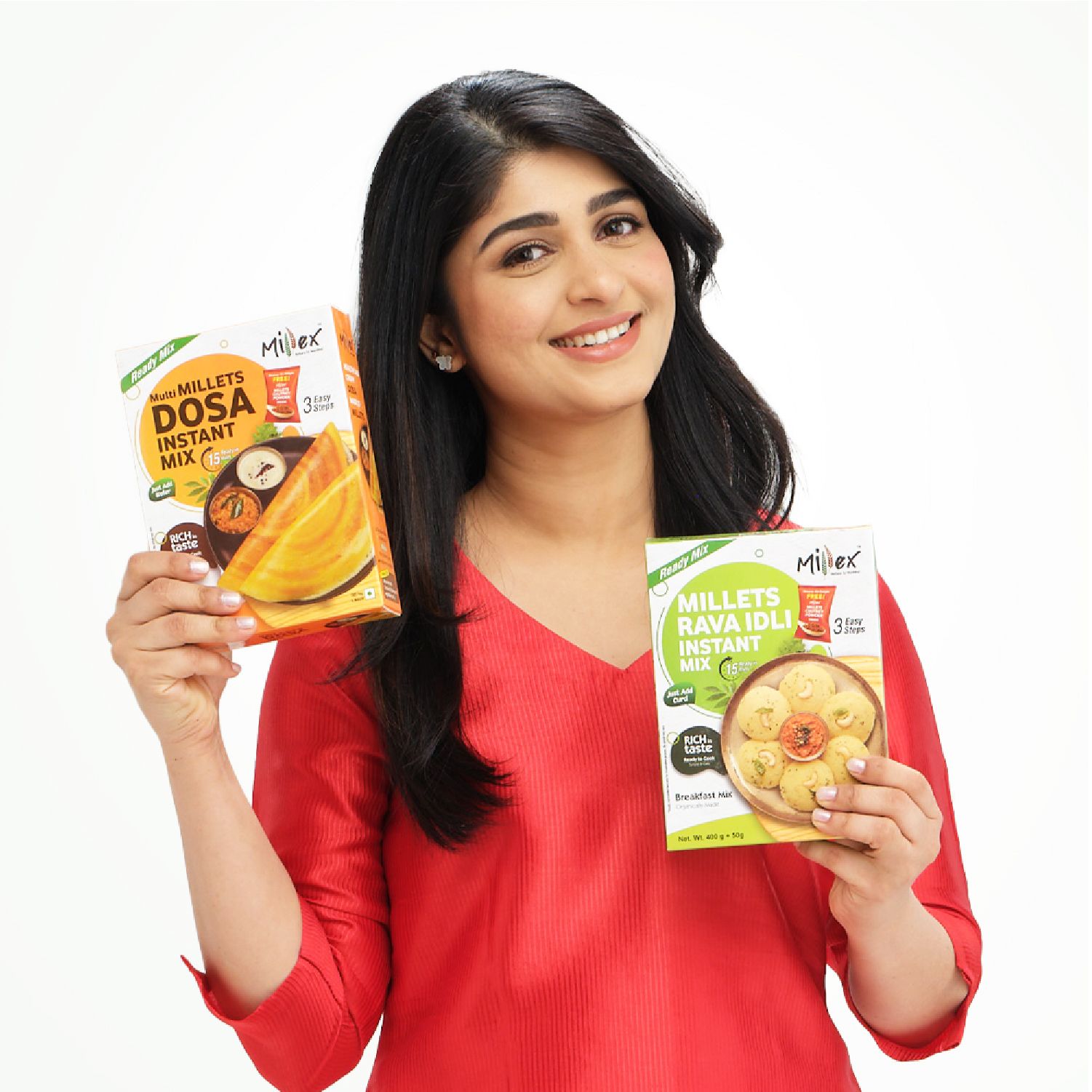Always feeling drained or dealing with stomach discomfort and digestive issues? Eating rice and wheat every day might do more damage than good. Grains, although popular, tend to lack balanced nutrition. In the long run, they can cause lifestyle disorders such as diabetes, obesity, or chronic fatigue, particularly when eaten every day without variation.
Dr. Khadar Vali millets over rice and wheat are a wiser option to lead a healthy lifestyle. Packed with natural nutrients, millets support overall well-being and help maintain a healthy system. Millex makes the incorporation of millets into your life simpler with their Millex Millet Health Drink Mix with Churnam. It is a ready-to-use mix filled with nutrition, flavour, and the wellness of traditional ingredients to make you feel healthier daily.

Shop Millex Healthy Millet Mix
Who is Dr. Khadar Vali?
● The Man Behind the Millet Movement
Dr. Khadar Vali, famously known as the "Millet Man of India", is a celebrated food and health specialist who has devoted his life to advocating millets as a healthier and environmentally friendly food option. His contributions cut across the domains of health, agriculture, and environmental consciousness.
Having a Ph.D in Steroids and a Master's in Science (Education), he turned his attention to environmental science and sustainable agriculture once back in India. Witnessing the setback in the cultivation of millets, he dedicated himself to revitalising these ancient grains once termed "poor man's food". Dr. Khadar Vali millet benefits include better digestion, detox, and control of lifestyle diseases.
● Leading a Silent Revolution
His path is both scientific and deeply rooted in social impact. Dr. Khadar Vali introduced the name "Positive Grains" or "Siridhanya" to describe millets like foxtail, kodo, little, barnyard, and browntop. These grains are known for their ideal mix of fibre and energy-giving carbs.
He has played a key role in reviving five native millet species on the verge of extinction. Using his group Manavata and launching the Millet Network of India, he connected growers, scientists, and decision-makers on a shared stage.
● Sustainable Farming and Global Recognition
He developed Kadu Krishi (Forest Cultivation), which encourages low-interference methods, mixed crop growth, and eco-friendly resource use. These techniques have improved land quality and boosted harvest output.
Dr. Vali's work extends globally. He has gained international acclaim for promoting millet as a solution to food insecurity, malnutrition, and climate change. In 2023, he received the prestigious Padma Shri Award, acknowledging his immense contribution to agriculture and public health.
● Championing Change on the Ground
More than theories and awards, Dr. Vali leads by his own example. He has guided countless cultivators, encouraged people to adopt new eating habits, and shown how millets benefit both the economy and the planet. His impact is set to influence lives far beyond India's borders.

Try our Ragi Dosa Mix for a nutritious start
Dr. Vali on Millets vs. Rice & Wheat
Dr. Khadar Vali has taken more than two decades to bring back five indigenous varieties of millets. During his speech entitled "Discovering the Millet Way to Good Health", he emphatically spoke about the corporatisation of agriculture and medicine and the excessive use of rice, wheat, and sugar in our day-to-day lives.
● Glucose Imbalance and the Modern Diet
Dr. Vali cautioned that these three ingredients, including rice, wheat, and sugar, are not our foods. He said their routine consumption triggers a "glucose imbalance", making the blood thick, impacting the heart, and destroying internal organs. Yet, not much attention worldwide is given to how these foods are endangering human health and why lifestyle diseases are on the increase.
● The Power of Forgotten Grains
Millets, as explained by Dr. Vali, used to be staples in India. They grew from more than 800 varieties of indigenous grass, even on less fertile soils. Individuals consuming them were healthier and stronger. Millet grasses draw water directly from the air and require little watering. However, rice, wheat, and sugarcane need excess water via dams or groundwater pumping, which raises carbon footprints.
● Feeding More, Using Less
He gave a striking example, highlighting rice vs wheat vs millets, as it takes approximately 8000 litres of water to grow 1 kg of rice, whereas only 150 litres of water are needed for 1kg of Kodo millet. The same quantity of water consumed to cultivate rice yields 30 kg of Kodo millet. Nutritionally, 1kg of millet provides ten people with food, but 1 kg of rice sustains only five.
● Millets and Health
Dr. Vali believes that rice and wheat are the causes of increased diseases such as diabetes, arthritis, thyroid problems, and fatty liver. He explained that millets thin the blood, support daily cell detoxification, and enhance glucose metabolism. Their rich fibre maintains a healthy gut and enhances immunity. Sugar is the worst for everyone, and he advises people to avoid it entirely.
● A Clear Message
In his final words, Dr. Vali said:
"If your food is right, no medicines are needed. If your food is wrong, no medicines will work. And the right food is millet."
Millets and Disease Cure: Dr. Vali's Positive Grain Theory
Grains Divided by Impact
Dr. Khadar Vali categorises grains into three groups according to their fibre content and health impact.
● Refined grains such as white rice and wheat contain under 2% dietary fibre. According to him, such grains are the cause of lifestyle diseases as they degrade digestion and clot blood.
● Neutral grains like jowar, bajra, finger millet, and proso millet contain 3 - 6%. They don't heal or harm, and offer no help in restoring health.
● Positive grains with fibre levels ranging from 8 - 12% aid in healing and detox. These comprise foxtail, banyard, browntop, little, and kodo millets.
Siri Dhanyaalu - The Healing Grains
Dr. Vali also referred to the five millets as Siri Dhanyaalu, or "wealth grains." This gives credence to the fact that health is real wealth. Each of the five millet types is known to help treat various health conditions.
● Foxtail Millet Rice
Supports emotional balance and helps manage nerve-related conditions, joint pain, Parkinson's, epilepsy, and mental health challenges.
● Kodo Millet Rice
Cleanses blood and cures anaemia, low immunity, diabetes, constipation, and sleep disorders.
● Barnyard Millet Rice
Supports liver and kidney health, reduces harmful cholesterol levels, and improves hormone system performance.
● Little Millet Rice
Supports reproductive health and treats PCOD, male and female infertility, and uterine conditions.

Buy Millex Mother Root – growth food for kids
Millet as Daily Medicine
Vali's theory is that selecting the proper food, particularly Siri Dhanyaalyu, can substitute the use of medicines. He strongly supports why millets are better than rice and wheat, highlighting their ability to detox the body, support daily cell repair, and aid in disease prevention. These positive grains offer lasting health benefits that refined grains cannot match.
Do's & Don'ts of Eating Millet
Millets have returned to the daily plate in a big way due to their richness in fibre, minerals, and versatility. Millets aid in improved digestion and overall well-being and act as a healthy substitute for refined grains. And yet, like every health practice, mindful eating comes first. Here are some significant dos and don'ts to keep in mind while incorporating millet into your diet:
Dos
● Select the Right Varieties: Incorporate high-fibre varieties like pearl millet and foxtail millet, which promote good digestion and are easy on the system.
● Drink Adequate Water: When eating Millets you should drink adequate water for better digestion. Drinking water prevents constipation and facilitates smooth digestion.
● Experiment with Variety in Meals: Experiment with recipes made from millets like porridges, salads, khichdi, or baked food. This makes your meals interesting and nutritious.
● Add Fresh Ingredients: Mix millets with veggies or fruits to make food more nutritious and nutrient-rich.
● Eat in Moderation: Excessive consumption, even of healthy grains, can lead to imbalance. Include millets in a balanced diet comprising proteins, fats, and other whole grains.
● Sprout Before Cooking: Sprouting enhances nutrition availability and facilitates easy digestion. Consider it for improved digestion.
● Cook Mindfully: Use methods such as boiling, steaming, or roasting to maintain nutrients rather than deep frying.
Don'ts
● Avoid Overconsumption: Consuming too much millet disturbs your digestion and nutrient balance.
● Don't Miss Soaking: Certain millets, like foxtail, are made easier to cook and digest by soaking them.
● Reduce Refined Additions: Limit excess sugar, oil, or processed foods in millet preparations.
● Chew Slowly: It makes digestion better and allows your body to absorb nutrients more effectively.
● Use Mild Seasoning: Choose gentle flavours to keep millet dishes light on the stomach.
● Skip Dense Proteins: Pair with soft proteins like lentils or paneer instead of meat like chicken or beef to avoid feeling too full.
● Skip Highly Processed Millet Products: Take whole or minimally processed millet for optimal benefit.
Stay Strong. Start With Millex!
Millets are more than a substitute grain, as they aid digestion, increase energy, and encourage long-term wellness when part of your diet is in the right way. Recognised as one of the most gluten-free grains in India, millet suits many dietary needs. Choosing the proper type, preparing them thoughtfully, and combining them with fresh, whole ingredients can add nutrition to every meal. Balance, water, and preparation are key to allowing your body to reap all the benefits millet provides.
Millex knows how precious time and health are, and therefore, their Millex Healthy Millet Mix Without Churnam is designed to unite convenience and nutrition. Full of the nutritional goodness of millets with traditional ingredients, it is a ready-to-cook format that easily integrates into your hectic life. As Dr. Khadar Vali recommended, make millets regular food with trusted brands like Millex, which is simple, nutritious, and perfect for those who want to eat better without overthinking every meal.
1. What are the 5 positive millets recommended by Dr. Khadar Vali?
A: The 5 positive millets recommended by Dr. Khadar Vali for better health and healing are:
-
Foxtail Millet (Korralu)
-
Kodo Millet (Arikelu)
-
Little Millet (Samalu)
-
Barnyard Millet (Oodalu)
-
Browntop Millet (Andu Korralu)
These millets are known to help manage lifestyle diseases, improve digestion, and support natural detoxification.
2. How are millets different from rice and wheat?
Millets are gluten-free, high in fiber, and rich in minerals. Unlike polished rice or wheat, they release energy slowly, preventing sugar spikes and promoting better digestion.
3. Can children and elderly people eat these millets?
Yes, millets are suitable for all age groups. Dr. Khadar recommends millet-based diets for kids, adults, and seniors to improve overall immunity and energy levels naturally.
4. How should millets be included in the diet?
Millets can be consumed as:
-
Millet rice (cooked like regular rice)
-
Dosa, idli, upma, or porridge
-
Millet flour rotis or snacks
Dr. Khadar also suggests rotating different millets daily for maximum benefits.
5. What are Siri Dhanya millets?
Siri Dhanya refers to a group of 5 positive millets identified by Dr. Khadar Vali for their healing properties:
-
Foxtail Millet (Korralu)
-
Little Millet (Samalu)
-
Kodo Millet (Arikelu)
-
Barnyard Millet (Oodalu)
-
Browntop Millet (Andu Korralu)
